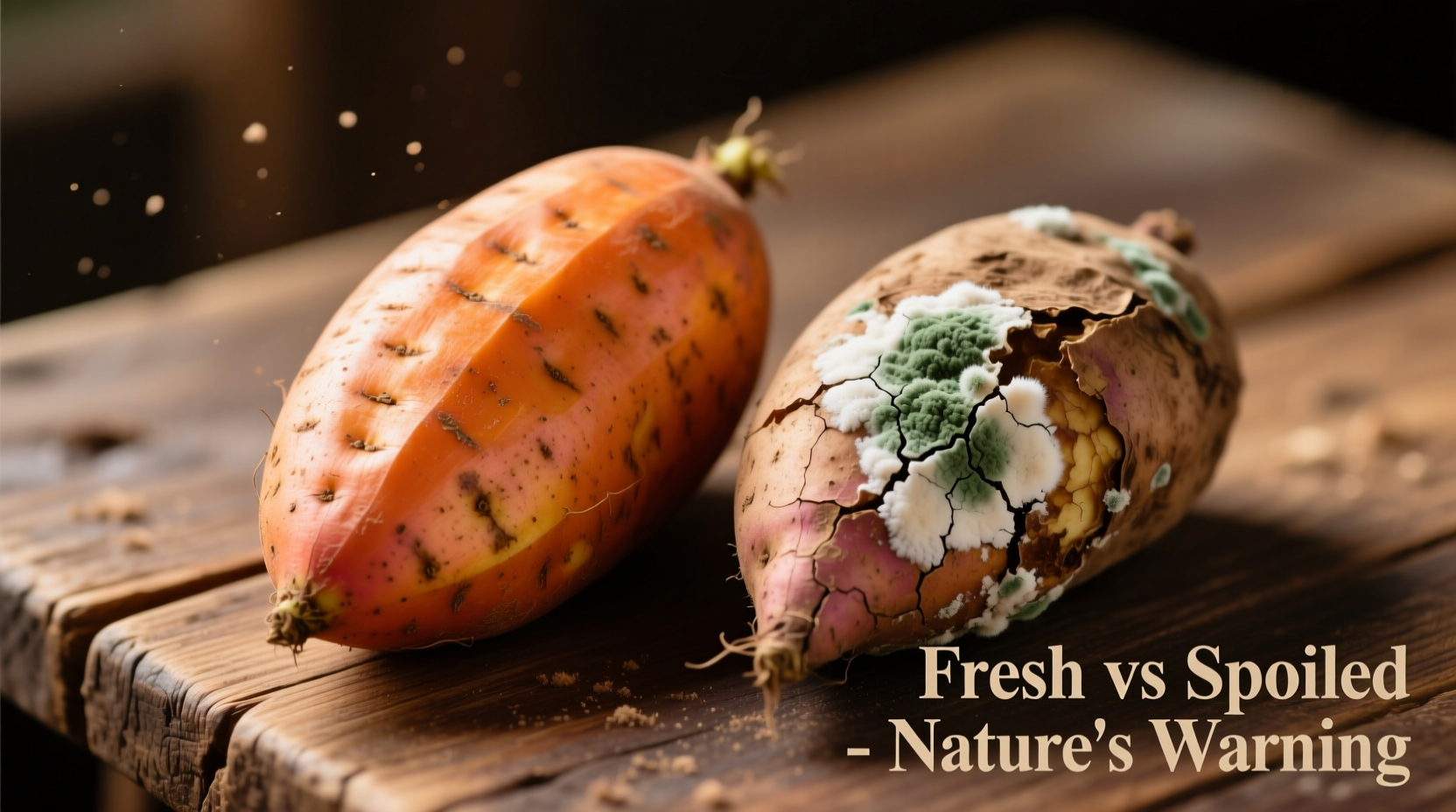Discovering spoiled produce can ruin meal plans and waste money. Knowing exactly how to tell if a sweet potato is bad helps prevent foodborne illness while reducing kitchen waste. This guide provides practical, science-backed indicators that anyone can use to assess sweet potato freshness with confidence.
Visual Indicators of Spoilage: What to Look For
Your eyes provide the first line of defense against spoiled sweet potatoes. While minor surface blemishes are normal, certain visual changes signal definite spoilage:
- Significant dark spots - Small dark spots can be cut away, but spots larger than an inch across indicate internal decay
- Mold growth - Any visible mold (white, green, or black fuzzy patches) means the entire sweet potato should be discarded
- Unusual discoloration - Orange sweet potatoes developing gray, black, or purple hues have likely spoiled
- Wrinkled or shrunken appearance - While slightly wrinkled sweet potatoes might still be safe, severely shrunken ones have lost moisture and quality
| Condition | Good Sweet Potato | Bad Sweet Potato |
|---|---|---|
| Surface Texture | Firm, smooth skin with minor blemishes | Wrinkled, mushy, or slimy patches |
| Color | Consistent orange, purple, or white depending on variety | Dark spots larger than 1 inch, mold, or unusual discoloration |
| Shape | Firm structure maintains shape | Significant soft spots or deformation |
| Smell | Earthy, slightly sweet aroma | Vinegary, sour, or unpleasant odor |
Texture Tells the Truth: The Touch Test
Texture changes often provide the most reliable indicators of spoilage. Gently press your sweet potato to assess its condition:
Firmness check: A fresh sweet potato should feel solid throughout. If you notice any soft spots that give way under gentle pressure, this indicates internal decay. According to FDA food safety guidelines, soft spots larger than a quarter indicate spoilage that has likely spread internally, even if not visible on the surface.
Wetness assessment: Any slimy or wet surface texture signals bacterial growth. The USDA recommends discarding sweet potatoes that feel damp or leave moisture on your fingers after handling.

When Soft Sweet Potatoes Are Still Safe
Not all texture changes mean your sweet potato has gone bad. Understanding context boundaries prevents unnecessary food waste:
- Sweet potatoes naturally become slightly softer after cooking - this doesn't indicate spoilage
- Some varieties like Japanese sweet potatoes have naturally softer texture when raw
- Minor soft spots (smaller than a dime) can be cut away with a 1-inch margin around the affected area
However, the University of California Cooperative Extension warns that once soft spots exceed 25% of the sweet potato's surface area, the entire vegetable should be discarded due to potential mycotoxin spread.
Spoilage Timeline: How Sweet Potatoes Deteriorate
Understanding the progression of spoilage helps catch problems early:
- Days 1-7: Optimal freshness with firm texture and vibrant color
- Days 8-14: Minor surface wrinkles may appear; still safe for consumption
- Days 15-21: Development of small soft spots; quality declining
- Days 22-28: Significant softening, dark spots appear, potential mold growth
- Day 29+: Advanced spoilage with extensive mold, unpleasant odor, and liquid seepage
Proper storage significantly extends this timeline. The National Center for Home Food Preservation notes that sweet potatoes stored at room temperature typically last 3-5 weeks, while refrigeration can extend freshness to 2-3 months.
Proper Storage Techniques to Maximize Freshness
Preventing spoilage starts with correct storage methods:
- Store in a cool, dark, well-ventilated place (55-60°F is ideal)
- Never refrigerate uncooked sweet potatoes - cold temperatures cause internal hardening
- Keep away from onions which release gases that accelerate spoilage
- Don't wash before storage - excess moisture promotes mold growth
- Check stored sweet potatoes weekly for early signs of spoilage
For cut sweet potatoes, the FDA recommends storing in an airtight container with cold water in the refrigerator, changing the water daily, and using within 3-4 days.
Safety First: When to Definitely Discard Sweet Potatoes
Certain conditions require immediate disposal for food safety reasons:
- Visible mold of any color or size
- Strong unpleasant odor (sour, vinegary, or chemical-like)
- Leaking liquid or excessive moisture
- Significant discoloration beyond normal flesh color
- Multiple soft spots covering more than 25% of the surface
The USDA Food Safety and Inspection Service emphasizes that when in doubt about produce safety, "when you see mold, throw it out" applies to sweet potatoes. Unlike hard cheeses or firm fruits, the soft structure of sweet potatoes allows mold to penetrate deeply.











 浙公网安备
33010002000092号
浙公网安备
33010002000092号 浙B2-20120091-4
浙B2-20120091-4